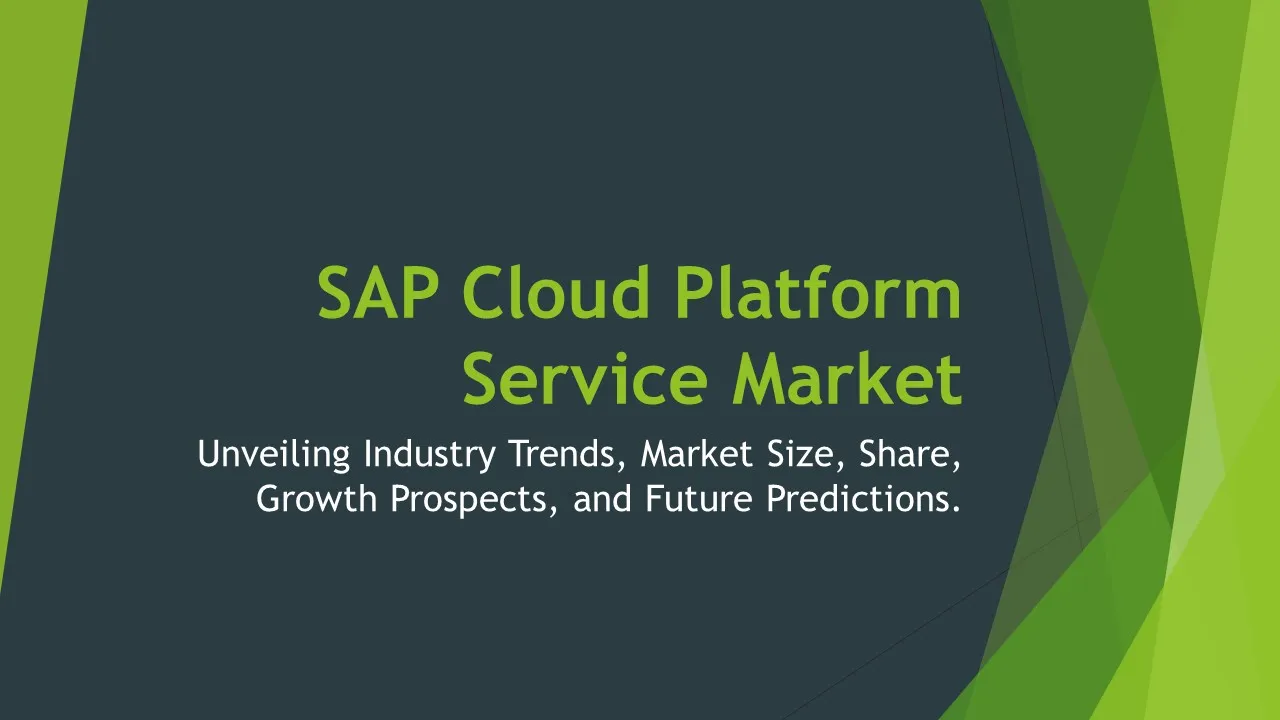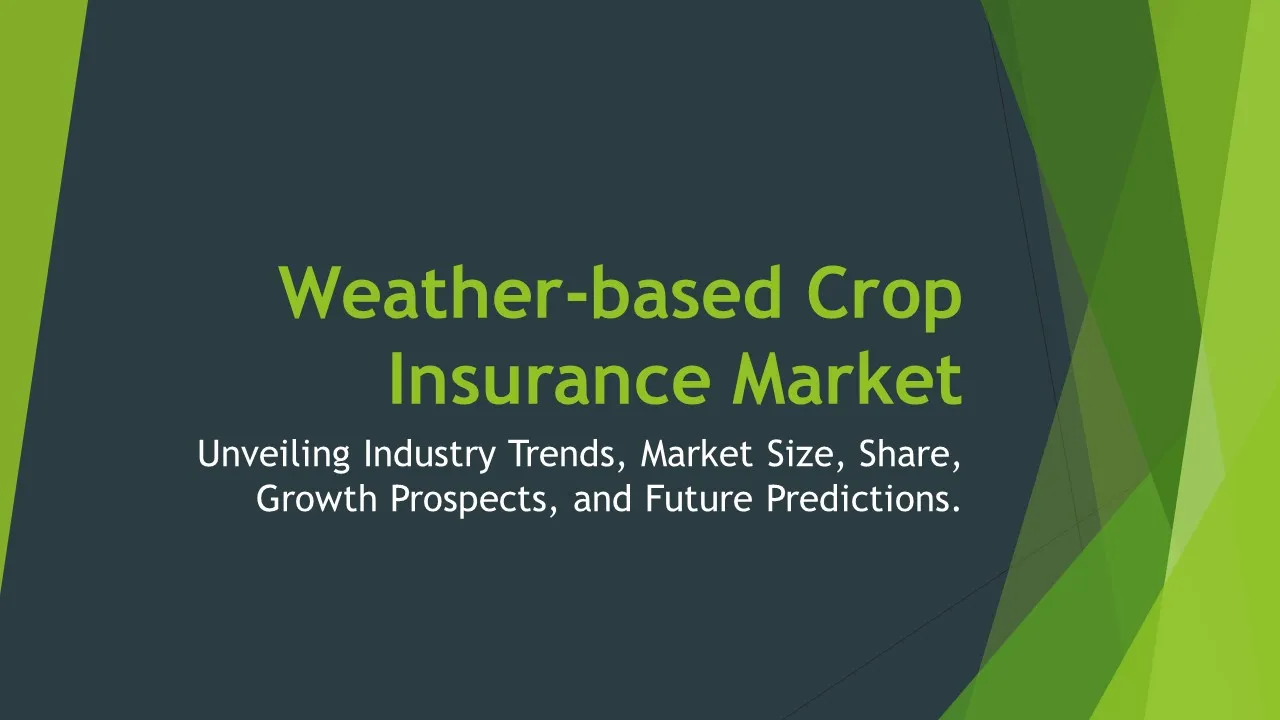Alternative Data Provider
Alternative Data Provider Market Segments - by Data Type (Web Data, Social Media Data, Geolocation Data, Financial Data, and Satellite Data), Industry Vertical (Finance, E-commerce, Healthcare, Transportation, and Retail), Delivery Model (API-based, Platform-based, Custom Solutions, Data Feeds, and Data Reports), End-User (Hedge Funds, Investment Banks, Asset Managers, Private Equity Firms, and Corporates), and Region (North America, Europe, Asia Pacific, Latin America, and Middle East & Africa) - Global Industry Analysis, Growth, Share, Size, Trends, and Forecast 2025-2035
- Report Preview
- Table Of Content
- Segments
- Methodology
Alternative Data Provider Market Outlook
The global alternative data provider market is projected to reach USD 13.95 billion by 2035, growing at a compound annual growth rate (CAGR) of 25.3% from 2025 to 2035. This substantial growth can be attributed to the increasing demand for non-traditional data sources across various sectors, enabling organizations to make informed decisions, mitigate risks, and improve operational efficiency. Factors such as the rising adoption of data analytics, the proliferation of digital platforms, and the growing need for competitive intelligence are also fuelling market expansion. Additionally, the surge in investment in alternative data solutions by hedge funds and investment firms is expected to drive the market further. With more organizations recognizing the value of alternative data in enhancing their competitive edge, the market is likely to see accelerated growth in the coming years.
Growth Factor of the Market
The alternative data provider market is experiencing robust growth due to the rapid digital transformation across industries, which has led to an exponential increase in data generation. Companies are increasingly leveraging alternative data to gain insights into customer behavior, market trends, and competitive landscapes. This growing reliance on data-driven decision-making is being further supported by advancements in technology, including artificial intelligence and machine learning, which enable organizations to process and analyze vast datasets efficiently. Moreover, the financial sector, particularly hedge funds and asset management firms, is increasingly utilizing alternative data to enhance their investment strategies and improve alpha generation. The COVID-19 pandemic has also accelerated the adoption of alternative data solutions as businesses seek innovative ways to adapt to changing market dynamics. As such, the convergence of technological advancements with a broader acceptance of alternative data will continue to propel the market forward.
Key Highlights of the Market
- Projected market growth to USD 13.95 billion by 2035, with a CAGR of 25.3%.
- Increased adoption of data-driven decision-making across various industries.
- Growing reliance on alternative data by hedge funds and investment firms.
- Technological advancements in AI and machine learning driving market efficiency.
- Expansion of digital platforms facilitating data generation and collection.
By Data Type
Web Data:
Web data, which includes information scraped from websites, forms a crucial part of the alternative data ecosystem. Organizations utilize web data for various applications such as price scraping, sentiment analysis, and competitive benchmarking. The rapid growth of e-commerce and the digitalization of businesses have further increased the demand for web data. Companies are using this data to track competitor pricing strategies, analyze market trends, and gain insights into consumer preferences. As web data continues to expand, driven by the availability of more online sources, its significance in decision-making processes and market analysis will continue to grow.
Social Media Data:
Social media data has emerged as a powerful form of alternative data, providing real-time insights into consumer sentiment, brand perception, and market trends. Companies monitor platforms such as Twitter, Facebook, and Instagram to gauge public opinion and assess the effectiveness of marketing campaigns. This data is particularly valuable for brands looking to enhance customer engagement and improve product offerings. The proliferation of social media usage has made this type of data more accessible, enabling organizations to leverage it for predictive analytics and trend forecasting, ultimately leading to better-informed business strategies.
Geolocation Data:
Geolocation data, sourced from mobile devices, GPS, and other location-based technologies, provides insight into consumer behavior and movement patterns. Businesses utilize geolocation data to analyze foot traffic in retail locations, optimize supply chain logistics, and enhance site selection processes. This type of data is especially beneficial for industries such as retail and transportation, as it helps organizations understand customer preferences and improve operational efficiency. As mobile technology continues to evolve, the availability and accuracy of geolocation data will enhance its role in decision-making across various sectors.
Financial Data:
Financial data serves as a cornerstone for alternative data providers, offering insights into company performance, market conditions, and investment opportunities. This data comprises earnings reports, credit ratings, and economic indicators, providing valuable context for investors and financial analysts. The increasing availability of real-time financial data has empowered investors to make quicker and more informed decisions, which is particularly important in volatile markets. As the demand for financial intelligence continues to rise, the relevance of alternative financial data will remain critical in shaping investment strategies.
Satellite Data:
Satellite data has gained traction as a unique form of alternative data, allowing organizations to monitor environmental changes, track agricultural yields, and analyze urban development patterns. This type of data is valuable for industries like agriculture, insurance, and energy, where understanding geographical and environmental factors is essential for informed decision-making. The growing availability of high-resolution satellite imagery and advancements in remote sensing technology are expanding the applications of satellite data, driving its adoption across various sectors. As industries increasingly recognize the potential of satellite data for strategic planning and risk management, its market presence is expected to grow significantly.
By Industry Vertical
Finance:
In the finance sector, alternative data plays a pivotal role in shaping investment strategies and risk management practices. Financial institutions, including hedge funds and investment banks, rely on alternative data sources to gain insights beyond traditional financial metrics. By integrating alternative data into their analysis, these firms can identify market inefficiencies, assess credit risk, and enhance their decision-making processes. The growing emphasis on data-driven investing is leading to an increased reliance on alternative data, as firms strive to outperform the market and optimize their portfolios. As financial markets become more competitive, the demand for innovative alternative data solutions is expected to grow.
E-commerce:
In the rapidly evolving e-commerce landscape, alternative data is instrumental in understanding consumer behavior and optimizing marketing strategies. Companies analyze online shopping trends, competitor pricing, and customer feedback to enhance their offerings and improve customer experiences. The ability to leverage alternative data enables e-commerce businesses to make informed decisions regarding inventory management, promotional activities, and customer engagement. As the e-commerce market continues to expand, the significance of alternative data in driving sales and enhancing customer loyalty will only increase, making it a vital component of e-commerce strategies.
Healthcare:
The healthcare industry is increasingly recognizing the value of alternative data in enhancing patient care and streamlining operations. Providers leverage alternative data sources to identify trends in patient outcomes, optimize treatment plans, and improve resource allocation. By integrating alternative data into clinical decision-making, healthcare organizations can enhance the quality of care provided to patients. Moreover, pharmaceutical companies utilize alternative data to gauge drug performance and evaluate market opportunities. As the healthcare sector continues to embrace data-driven approaches, the demand for alternative data provider services will likely grow.
Transportation:
Transportation companies are utilizing alternative data to optimize routes, improve logistics, and enhance overall operational efficiency. By analyzing traffic patterns, weather conditions, and geolocation data, organizations can make data-informed decisions to reduce costs and improve service delivery. Furthermore, transportation companies can leverage alternative data to predict demand fluctuations and enhance fleet management strategies. As the transportation sector continues to digitize and adopt advanced technologies, the importance of alternative data in driving efficiency and enhancing service quality will become increasingly pronounced.
Retail:
Retail businesses are leveraging alternative data to optimize inventory management, enhance customer experiences, and improve marketing efforts. By analyzing foot traffic data, customer sentiment on social media, and sales trends, retailers can make data-driven decisions that align with consumer preferences. Additionally, alternative data allows retailers to assess market conditions and competitor strategies, enabling them to gain a competitive edge. As the retail landscape becomes more digital and consumer-centric, the role of alternative data in shaping retail strategies will continue to grow significantly.
By Delivery Model
API-based:
The API-based delivery model has become increasingly popular among alternative data providers, as it allows organizations to easily integrate data into their existing systems and workflows. By leveraging APIs, businesses can access real-time data feeds, enabling them to make timely decisions based on the latest information. This model also facilitates scalability, as organizations can seamlessly expand their data access as their needs evolve. The API-based approach enhances the overall efficiency of data consumption, making it a preferred choice for companies seeking to leverage alternative data without the need for extensive infrastructure changes.
Platform-based:
Platform-based delivery models provide users with centralized access to a wide range of alternative data sources. These platforms often come equipped with tools for data analysis and visualization, allowing users to derive actionable insights from complex datasets. The convenience of a single platform for accessing multiple data types streamlines the decision-making process for organizations, making it an attractive option for many businesses. Additionally, platform-based solutions often offer customizable features, enabling users to tailor their data access to specific business needs.
Custom Solutions:
Custom solutions for alternative data delivery cater to the unique requirements of specific organizations, allowing them to access tailored datasets that align with their strategic objectives. These solutions are particularly valuable for firms with specialized data needs or those operating in niche markets. By leveraging custom solutions, organizations can ensure that they receive relevant data that significantly contributes to their analytical capabilities. The flexibility of custom solutions allows businesses to adapt their data strategies as market conditions change, enhancing their competitiveness in dynamic environments.
Data Feeds:
Data feeds are another common delivery model in the alternative data market, providing organizations with a continuous stream of data that can be integrated into their analytics processes. This model enables businesses to access real-time information, which is critical for time-sensitive decision-making. Data feeds can include various types of alternative data, from financial metrics to geolocation data, allowing organizations to stay updated on the latest developments in their respective industries. The reliability and timeliness of data feeds enhance their value, making them an essential component of data-driven strategies.
Data Reports:
Data reports provide organizations with structured insights and analyses based on alternative data sources. These reports are often compiled by data experts who interpret complex datasets and present findings in a user-friendly format. Data reports can be valuable for strategic planning and investment decisions, as they provide context and analysis that go beyond raw data. Organizations often utilize data reports to gain a deeper understanding of market trends, competitor dynamics, and consumer behavior, contributing to more informed decision-making processes.
By User
Hedge Funds:
Hedge funds are among the most prominent users of alternative data, leveraging its insights to enhance their investment strategies and outperform traditional financial metrics. By integrating alternative data sources, hedge funds can gain a competitive edge in identifying lucrative investment opportunities and mitigating risks. The dynamic nature of hedge fund operations makes them particularly reliant on timely data, which alternative data providers can offer. As hedge funds continue to seek innovative approaches to investment, the demand for alternative data solutions is expected to grow significantly.
Investment Banks:
Investment banks utilize alternative data to improve their advisory services, assess market conditions, and enhance risk management practices. By analyzing alternative data sources, investment banks can provide clients with informed recommendations and insights that go beyond conventional financial data. This reliance on alternative data is becoming increasingly critical in an environment where market dynamics are shifting rapidly. The ability to harness alternative data will enable investment banks to maintain their competitive edge and deliver superior value to clients.
Asset Managers:
Asset managers are increasingly incorporating alternative data into their investment processes to enhance portfolio management and risk assessment. By leveraging insights derived from alternative data sources, asset managers can better understand market trends, consumer behavior, and potential investment risks. This data-driven approach allows them to make more informed decisions, thereby improving the overall performance of their investment portfolios. As asset managers continue to adapt to evolving market dynamics, the role of alternative data in shaping their strategies will become more pronounced.
Private Equity Firms:
Private equity firms are employing alternative data to evaluate investment opportunities, assess target companies, and inform their due diligence processes. By analyzing alternative data sources, these firms can gain insights into market trends, competitive landscapes, and potential risks associated with their investments. This comprehensive understanding of the market landscape enables private equity firms to make informed decisions regarding acquisitions and investments. As the competitive landscape continues to evolve, the demand for alternative data solutions among private equity firms is likely to increase.
Corporates:
Corporates across various industries are leveraging alternative data to enhance their strategic planning and operational efficiency. By analyzing alternative data sources, organizations can identify emerging trends, assess customer preferences, and optimize their supply chain management. This data-driven approach allows corporates to make informed decisions, enhance their competitive positioning, and ultimately improve profitability. As businesses increasingly recognize the value of alternative data in driving performance, its adoption among corporates is expected to grow significantly.
By Region
In the North American region, the alternative data provider market is expected to dominate the global landscape, accounting for approximately 45% of the total market share by 2035. This growth can be attributed to the high concentration of financial institutions, hedge funds, and investment firms that actively leverage alternative data to enhance their strategies. The United States, in particular, is leading the charge in alternative data adoption due to its robust financial ecosystem and advancements in technology. The CAGR for the North American market is anticipated to be around 25.5%, driven by the increased emphasis on data-driven decision-making across various sectors.
In Europe, the alternative data provider market is projected to hold a significant share, accounting for roughly 30% of the global market by 2035. The European market is characterized by a growing emphasis on regulatory compliance and risk management, leading financial institutions to seek alternative data sources for informed decision-making and risk mitigation. Countries such as the United Kingdom, Germany, and France are at the forefront of this growth, with an expected CAGR of 24% as businesses increasingly recognize the importance of alternative data in gaining competitive insights and enhancing operational efficiency.
Opportunities
The alternative data provider market is poised to capitalize on several emerging opportunities in the coming years. Firstly, the ongoing advancements in technology, such as machine learning and artificial intelligence, are enhancing data processing capabilities and analytics. These technological developments enable alternative data providers to offer more sophisticated insights and predictive analytics, thus attracting a broader customer base across various industries. Additionally, the increasing demand for real-time data and insights is pushing businesses to adopt alternative data solutions that can deliver timely information. As organizations strive to remain competitive in their respective markets, the need for innovative and efficient data solutions will create significant opportunities for alternative data providers.
Furthermore, the expansion of digital platforms and the growing reliance on data-driven decision-making present additional avenues for growth within the alternative data provider market. As businesses increasingly recognize the value of alternative data for enhancing operational efficiencies and improving customer experiences, the market will see an influx of investments. Moreover, the rise of e-commerce and online services is generating vast amounts of data that can be harnessed by alternative data providers to create actionable insights. With the continuous evolution of data sources and applications, alternative data providers have a unique opportunity to evolve their offerings and develop groundbreaking solutions that meet the demands of an increasingly data-centric world.
Threats
Despite the growth potential of the alternative data provider market, several threats could impede its expansion. One of the most significant challenges is the potential for regulatory scrutiny regarding data privacy and security. As alternative data often involves collecting information from various online sources, there is an inherent risk of violating privacy regulations. Organizations must navigate the complex landscape of data protection laws, such as GDPR and CCPA, to ensure compliance. Failure to adhere to these regulations could result in legal repercussions and reputational damage, hindering market growth. Additionally, as the market becomes more crowded, competition among alternative data providers is intensifying, potentially leading to pricing pressures and reduced profit margins.
Moreover, the reliance on data quality and accuracy presents a threat to the alternative data provider market. If data is not accurate or relevant, it can lead to misguided decision-making and reputational harm for the organizations leveraging it. As the demand for alternative data continues to increase, providers must ensure the quality and reliability of their datasets to maintain customer trust and satisfaction. In an environment where businesses are becoming more data-savvy, the need for high-quality alternative data will be paramount, and any lapses in data integrity could adversely impact the market.
Competitor Outlook
- Refinitiv
- Quandl
- Alternative Data Group
- YipitData
- DataSift
- Thinknum
- App Annie
- Market Prophit
- Crimson Hexagon
- SecondMeasure
- News API
- Orbital Insight
- Zyte
- Terra Insight
- StreetLight Data
The competitive landscape of the alternative data provider market is characterized by a diverse range of players, each offering unique solutions tailored to various industries and use cases. Established companies such as Refinitiv and Quandl lead the market, capitalizing on their extensive datasets and sophisticated analytics capabilities. These organizations have built strong reputations within the financial sector by providing high-quality data that enhances decision-making processes. Additionally, emerging players like YipitData and Thinknum are making their mark by focusing on niche markets and innovative data applications, attracting attention from investors and businesses looking to capitalize on alternative data insights.
As competition intensifies, alternative data providers are increasingly differentiating themselves through the development of specialized solutions and enhanced data analytics capabilities. For instance, companies like Orbital Insight leverage satellite data for unique applications such as monitoring urban development and environmental changes. Meanwhile, firms like App Annie focus on mobile app data to provide insights into user behavior and market trends within the app ecosystem. This diversification of offerings enables competitors to cater to specific market demands and enhance their value propositions.
Furthermore, the emphasis on data quality and compliance is driving competition among alternative data providers. Organizations such as DataSift and News API prioritize data integrity, ensuring their datasets adhere to regulatory standards while delivering valuable insights. As businesses become increasingly data-savvy and discerning, the ability to provide accurate and reliable alternative data will become a key differentiator among competitors. The ongoing evolution of the competitive landscape will shape the future of the alternative data provider market, fostering innovation and driving growth across various sectors.
1 Appendix
- 1.1 List of Tables
- 1.2 List of Figures
2 Introduction
- 2.1 Market Definition
- 2.2 Scope of the Report
- 2.3 Study Assumptions
- 2.4 Base Currency & Forecast Periods
3 Market Dynamics
- 3.1 Market Growth Factors
- 3.2 Economic & Global Events
- 3.3 Innovation Trends
- 3.4 Supply Chain Analysis
4 Consumer Behavior
- 4.1 Market Trends
- 4.2 Pricing Analysis
- 4.3 Buyer Insights
5 Key Player Profiles
- 5.1 Zyte
- 5.1.1 Business Overview
- 5.1.2 Products & Services
- 5.1.3 Financials
- 5.1.4 Recent Developments
- 5.1.5 SWOT Analysis
- 5.2 Quandl
- 5.2.1 Business Overview
- 5.2.2 Products & Services
- 5.2.3 Financials
- 5.2.4 Recent Developments
- 5.2.5 SWOT Analysis
- 5.3 DataSift
- 5.3.1 Business Overview
- 5.3.2 Products & Services
- 5.3.3 Financials
- 5.3.4 Recent Developments
- 5.3.5 SWOT Analysis
- 5.4 News API
- 5.4.1 Business Overview
- 5.4.2 Products & Services
- 5.4.3 Financials
- 5.4.4 Recent Developments
- 5.4.5 SWOT Analysis
- 5.5 Thinknum
- 5.5.1 Business Overview
- 5.5.2 Products & Services
- 5.5.3 Financials
- 5.5.4 Recent Developments
- 5.5.5 SWOT Analysis
- 5.6 App Annie
- 5.6.1 Business Overview
- 5.6.2 Products & Services
- 5.6.3 Financials
- 5.6.4 Recent Developments
- 5.6.5 SWOT Analysis
- 5.7 Refinitiv
- 5.7.1 Business Overview
- 5.7.2 Products & Services
- 5.7.3 Financials
- 5.7.4 Recent Developments
- 5.7.5 SWOT Analysis
- 5.8 YipitData
- 5.8.1 Business Overview
- 5.8.2 Products & Services
- 5.8.3 Financials
- 5.8.4 Recent Developments
- 5.8.5 SWOT Analysis
- 5.9 SecondMeasure
- 5.9.1 Business Overview
- 5.9.2 Products & Services
- 5.9.3 Financials
- 5.9.4 Recent Developments
- 5.9.5 SWOT Analysis
- 5.10 Terra Insight
- 5.10.1 Business Overview
- 5.10.2 Products & Services
- 5.10.3 Financials
- 5.10.4 Recent Developments
- 5.10.5 SWOT Analysis
- 5.11 Market Prophit
- 5.11.1 Business Overview
- 5.11.2 Products & Services
- 5.11.3 Financials
- 5.11.4 Recent Developments
- 5.11.5 SWOT Analysis
- 5.12 Crimson Hexagon
- 5.12.1 Business Overview
- 5.12.2 Products & Services
- 5.12.3 Financials
- 5.12.4 Recent Developments
- 5.12.5 SWOT Analysis
- 5.13 Orbital Insight
- 5.13.1 Business Overview
- 5.13.2 Products & Services
- 5.13.3 Financials
- 5.13.4 Recent Developments
- 5.13.5 SWOT Analysis
- 5.14 StreetLight Data
- 5.14.1 Business Overview
- 5.14.2 Products & Services
- 5.14.3 Financials
- 5.14.4 Recent Developments
- 5.14.5 SWOT Analysis
- 5.15 Alternative Data Group
- 5.15.1 Business Overview
- 5.15.2 Products & Services
- 5.15.3 Financials
- 5.15.4 Recent Developments
- 5.15.5 SWOT Analysis
- 5.1 Zyte
6 Market Segmentation
- 6.1 Alternative Data Provider Market, By User
- 6.1.1 Hedge Funds
- 6.1.2 Investment Banks
- 6.1.3 Asset Managers
- 6.1.4 Private Equity Firms
- 6.1.5 Corporates
- 6.2 Alternative Data Provider Market, By Data Type
- 6.2.1 Web Data
- 6.2.2 Social Media Data
- 6.2.3 Geolocation Data
- 6.2.4 Financial Data
- 6.2.5 Satellite Data
- 6.3 Alternative Data Provider Market, By Industry Vertical
- 6.3.1 Finance
- 6.3.2 E-commerce
- 6.3.3 Healthcare
- 6.3.4 Transportation
- 6.3.5 Retail
- 6.1 Alternative Data Provider Market, By User
7 Competitive Analysis
- 7.1 Key Player Comparison
- 7.2 Market Share Analysis
- 7.3 Investment Trends
- 7.4 SWOT Analysis
8 Research Methodology
- 8.1 Analysis Design
- 8.2 Research Phases
- 8.3 Study Timeline
9 Future Market Outlook
- 9.1 Growth Forecast
- 9.2 Market Evolution
10 Geographical Overview
- 10.1 Europe - Market Analysis
- 10.1.1 By Country
- 10.1.1.1 UK
- 10.1.1.2 France
- 10.1.1.3 Germany
- 10.1.1.4 Spain
- 10.1.1.5 Italy
- 10.1.1 By Country
- 10.2 Asia Pacific - Market Analysis
- 10.2.1 By Country
- 10.2.1.1 India
- 10.2.1.2 China
- 10.2.1.3 Japan
- 10.2.1.4 South Korea
- 10.2.1 By Country
- 10.3 Latin America - Market Analysis
- 10.3.1 By Country
- 10.3.1.1 Brazil
- 10.3.1.2 Argentina
- 10.3.1.3 Mexico
- 10.3.1 By Country
- 10.4 North America - Market Analysis
- 10.4.1 By Country
- 10.4.1.1 USA
- 10.4.1.2 Canada
- 10.4.1 By Country
- 10.5 Middle East & Africa - Market Analysis
- 10.5.1 By Country
- 10.5.1.1 Middle East
- 10.5.1.2 Africa
- 10.5.1 By Country
- 10.6 Alternative Data Provider Market by Region
- 10.1 Europe - Market Analysis
11 Global Economic Factors
- 11.1 Inflation Impact
- 11.2 Trade Policies
12 Technology & Innovation
- 12.1 Emerging Technologies
- 12.2 AI & Digital Trends
- 12.3 Patent Research
13 Investment & Market Growth
- 13.1 Funding Trends
- 13.2 Future Market Projections
14 Market Overview & Key Insights
- 14.1 Executive Summary
- 14.2 Key Trends
- 14.3 Market Challenges
- 14.4 Regulatory Landscape
Segments Analyzed in the Report
The global Alternative Data Provider market is categorized based on
By Data Type
- Web Data
- Social Media Data
- Geolocation Data
- Financial Data
- Satellite Data
By Industry Vertical
- Finance
- E-commerce
- Healthcare
- Transportation
- Retail
By User
- Hedge Funds
- Investment Banks
- Asset Managers
- Private Equity Firms
- Corporates
By Region
- North America
- Europe
- Asia Pacific
- Latin America
- Middle East & Africa
Key Players
- Refinitiv
- Quandl
- Alternative Data Group
- YipitData
- DataSift
- Thinknum
- App Annie
- Market Prophit
- Crimson Hexagon
- SecondMeasure
- News API
- Orbital Insight
- Zyte
- Terra Insight
- StreetLight Data
- Publish Date : Jan 21 ,2025
- Report ID : IT-69131
- No. Of Pages : 100
- Format : |
- Ratings : 4.5 (110 Reviews)

-based-banking.webp)







